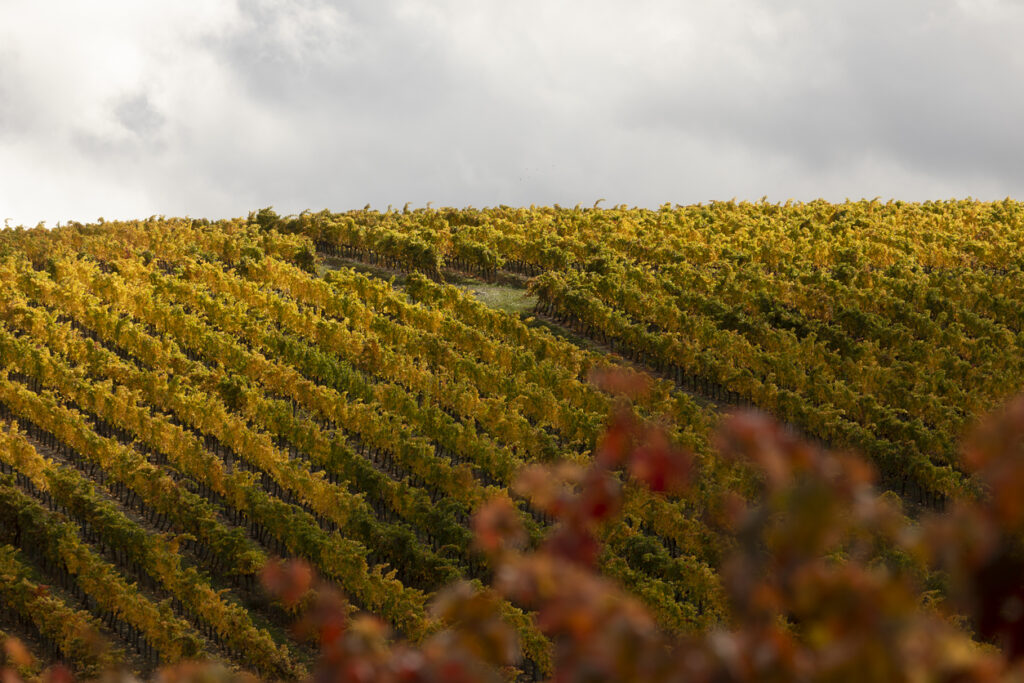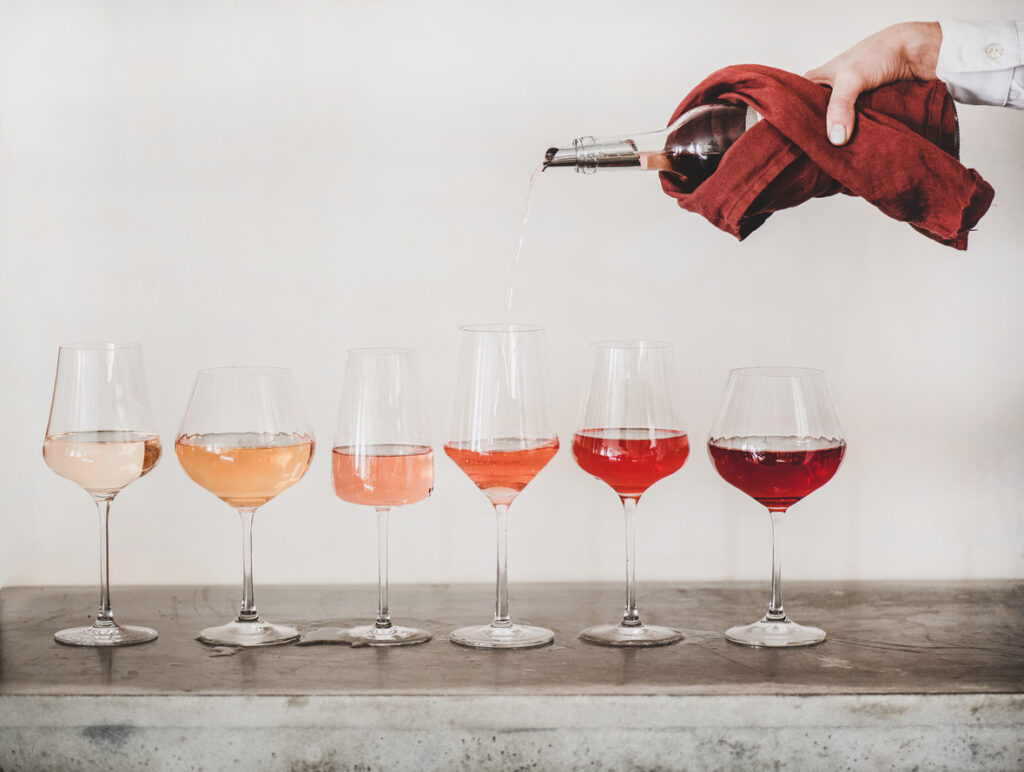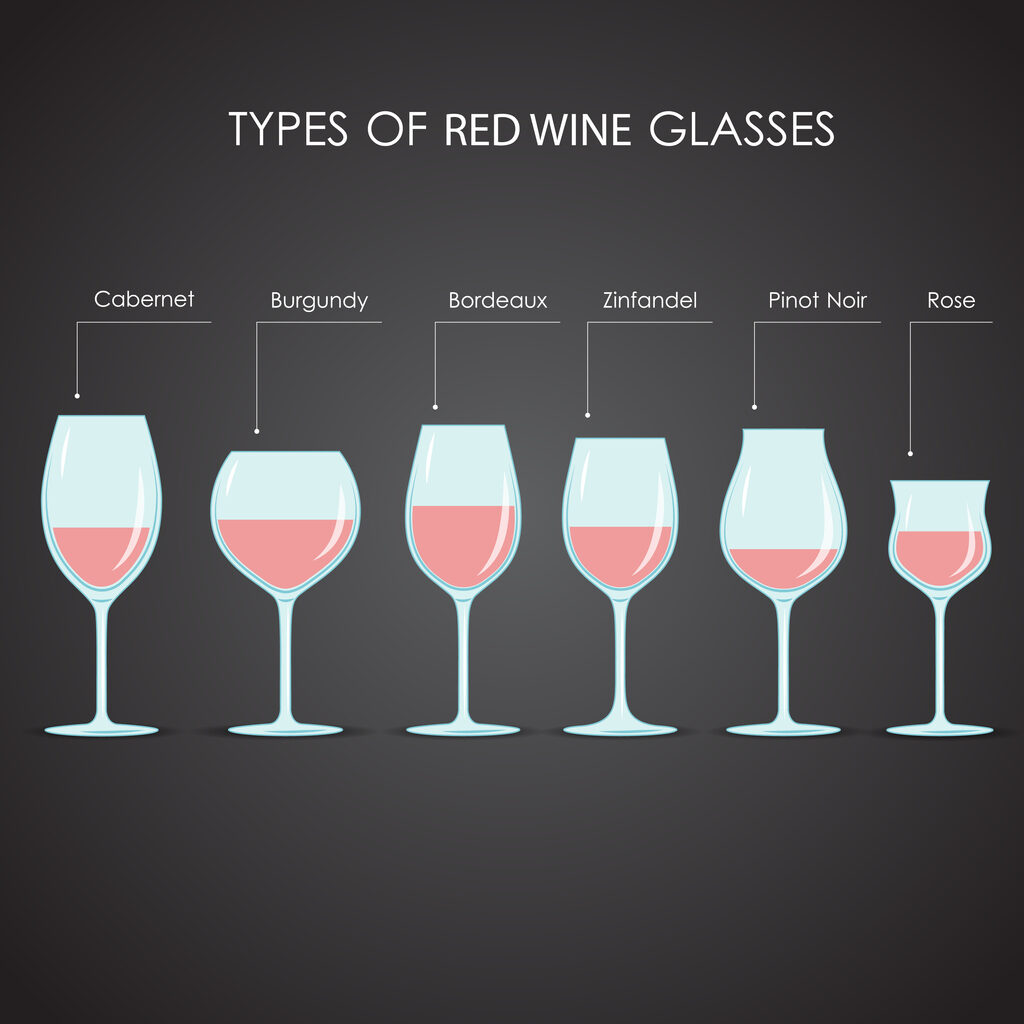Languedoc-Roussillon, located in southern France, is a vast and diverse wine region that has experienced a renaissance in recent years. Known for producing both Appellation Contrôlée and Vin de Pays wines, the area is characterized by its unique terroir and innovative winemaking techniques. Wine enthusiasts seeking great value and distinct flavors have increasingly turned their attention to the Languedoc, showcasing the region’s growing global stature.
The Languedoc-Roussillon wine region holds a treasure trove of history and natural beauty, with picturesque vineyards nestled among the Pyrenees mountain range. As one of France’s largest wine-producing areas, the Languedoc boasts a wide range of grape varieties and styles, allowing winemakers to craft distinctive blends that cater to a multitude of preferences. From the vin de pays labeled Vin de Pays d’Oc to the various appellations found throughout the region, Languedoc-Roussillon offers a multitude of options for wine enthusiasts to explore.

Family-driven vineyards and innovative wine producers are at the heart of the Languedoc wine scene. These passionate winemakers are committed to highlighting the region’s unique characteristics while preserving its rich heritage. As an emerging powerhouse in the world of wine, the Languedoc-Roussillon region is a destination worth discovering for those seeking a fresh and diverse experience.
Languedoc Wine Region
The Languedoc wine region, part of the larger Languedoc-Roussillon area, is located in the south of France along the Mediterranean Sea. Stretching from the eastern edge of Roussillon to the western foothills of the Pyrenees mountains, this vast region is characterized by a diverse climate, offering both sun-drenched days and soothing coastal winds.

The climate in Languedoc plays a significant role in shaping the wines produced in this region. The abundance of sunshine provides ample warmth for grape ripening, while the cool winds from the Mediterranean Sea help retain acidity and freshness in the wines. These favorable conditions have fostered a long-standing tradition of winegrowing in the area, with the region’s winegrowers keenly attuned to the nuances of their respective terroirs.
Landscapes
Languedoc is known for its varied landscapes, including the coastal plains, rolling hills, and rugged mountains. These different terrains contribute to the many unique terroirs within the region, each with its own distinct soil types and microclimates. This diversity of terroirs allows for the cultivation of a wide range of grape varieties, both red and white, including Grenache, Syrah, Carignan, and Mourvèdre for the reds and Piquepoul, Roussanne, and Viognier for the whites.

Winemaking
The Languedoc wine region boasts a rich and complex history, intertwined with the wider traditions of French winemaking. The region’s diverse terroirs and climate have long been a source of inspiration for winegrowers, as they continue to produce unique and expressive wines that reflect the essence of southern France. From the vibrant Mediterranean coastline to the powerful Pyrenees mountains, Languedoc offers an exceptional wine experience that combines tradition, innovation, and a subtle taste of the finest local terroirs.

Grape Varieties and Blends
Red Wine Grapes
Languedoc is a region known for its diverse grape varieties, particularly in the production of red wines. The predominant red grape varieties in Languedoc include Grenache, Syrah, Carignan, Mourvèdre, and Cinsault. These grapes are often blended together, allowing for creative and unique flavor profiles.

Grenache is well-suited to the warm climate of Languedoc and contributes to the overall fruitiness of the blends. Syrah adds a deep color, rich flavors, and a hint of spice. Carignan is a high-yielding grape, giving body and structure to the blend, while Mourvèdre contributes tannins and a touch of savory complexity. Lastly, Cinsault adds a subtle freshness and lighter fruit flavors to the mix.
White Wine Grapes
While Languedoc is primarily known for its reds, it also produces a variety of exceptional white wines using grapes such as Marsanne, Roussanne, Grenache Blanc, Chardonnay, Viognier, Picpoul, and Sauvignon. These grapes can be used individually or blended together to create vibrant, balanced, and refreshing white wines.

- Marsanne and Roussanne are often used together in blends, providing complementary flavors and textures, with Marsanne bringing a rich, honeyed character, and Roussanne adding elegance and acidity.
- Grenache Blanc contributes a green apple and citrus flavor profile to white blends, along with a creamy texture.
- Chardonnay is a versatile grape that adapts well to the Languedoc terroir, producing wines with tropical fruit and mineral undertones.
- Viognier, known for its aromatic bouquet, imparts a unique floral character to white wines, with notes of apricot, peach, and honeysuckle.
- Picpoul is a native grape to Languedoc, offering high acidity and fresh citrus flavors. It is often used as a single-varietal wine or to bring balance to a blend.
- Sauvignon adds a zesty acidity and herbaceous notes to white blends, creating a lively and refreshing wine.

In conclusion, both red and white wine blends from Languedoc encompass a vast range of grape varieties, allowing for a multitude of creative and diverse flavor profiles. This adaptability allows the Languedoc wine region to appeal to a wide array of wine enthusiasts and solidifies its position as a noteworthy wine producer.
Appellations and IGP
Appellations
Languedoc-Roussillon is a prominent wine producing region, boasting 23 Appellations d’Origine Contrôlée or Protégée (AOCs/AOPs) which cover about 16% of the region’s production. The area consists of three main departments – Aude, Hérault, and Gard – and extends to the Eastern Pyrenees within the Languedoc AOC appellation. The region encompasses 36 controlled origin appellations and covers a total surface of 40,000 hectares.

Some notable appellations within the Languedoc-Roussillon region include:
- Coteaux du Languedoc: A large and diverse appellation, it consists of several sub-appellations such as Terrasses du Larzac and La Clape, known for their quality red wines.
- Saint Chinian: Renowned for its robust red wines, this appellation is predominantly made up of Syrah and Mourvèdre grapes.
- Limoux: Known for its sparkling wines made using the traditional méthode ancestrale and focus on Chardonnay, Chenin Blanc, and Mauzac grape varieties.
- Corbières: This appellation is recognized for its red and rosé wines, primarily produced from Carignan, Grenache, and Syrah grapes.
- Faugères: A smaller appellation, Faugères is highly regarded for its schist soil which imparts unique flavors to its red wines.
- Picpoul de Pinet: This appellation focuses on the production of white wines, specifically the Piquepoul grape, which produces crisp and refreshing wines with high acidity.

IGP (Indication Géographique Protégée)
For wines that do not fit the AOC/AOP classification system, there is the option of being classified as Indication Géographique Protégée (IGP). IGP Pays d’Oc is a significant category within the Languedoc-Roussillon region, with 120,000 hectares under vine, making it comparable in size to South Africa’s total vineyard area. IGP wines offer flexibility in terms of grape variety, with a wide range of options available for winemakers to choose from.

Vin de Pays
Before the term IGP was introduced, the designation for these wines was Vin de Pays, which translates to “country wine.” While the classification has since evolved to IGP, many bottles from this region still use the Vin de Pays d’Oc label. These wines offer affordable, easy-drinking options, showcasing the region’s diversity and ability to produce quality wines beyond the traditional AOC/AOP appellations.
Styles of Languedoc Wines
Red Wines
Languedoc region is known for its red wines, which make up 60% of the total wine production in the area. These red wines are typically made with Grenache, Syrah, Mourvèdre, and Cinsault grapes. They are often full-bodied, balanced, and pair well with various food dishes. Some of the most popular Languedoc red wines include:

Mas de Daumas Gassac
A blend of Cabernet Sauvignon and other grape varieties, this wine has a deep color and bold flavors of dark fruit, spice, and herbs.
Grange des Pères
This wine is a blend of Syrah, Mourvèdre, and Cabernet Sauvignon. It is known for its elegant structure and rich, complex flavors.
White Wines
White wines make up 20% of the region’s total wine production. They are mostly unoaked and zesty, offering a refreshing alternative to heavier red wines. The main grape varieties used in Languedoc white wines include Picpoul and Grenache Blanc. These wines are crisp and acidic, ideal for pairing with seafood and light dishes. Some examples of Languedoc white wines are:

Picpoul de Pinet
A single varietal wine made from Picpoul grapes, it has bright acidity, citrus flavors, and a refreshing finish.
Grenache Blanc
It is often used as a blending grape. Grenache Blanc produces fresh, aromatic white wines with flavors of green apple and white peach.
Rosé Wines
Languedoc produces delightful rosé wines made from the same grape varieties as the reds and whites. Their color ranges from pale pink to deep salmon. Their flavors offer a mix of red fruit, citrus, and floral notes. Languedoc rosés are well-balanced and can be enjoyed as an aperitif or with light meals.

Sweet Wines
While not as widely known as other styles, Languedoc does produce some sweet wines. Winemakers use late-harvest grapes, which have a higher concentration of sugar, to produce these wines. Sweet Languedoc derives from a variety of grapes, including Muscat, Rivesaltes, and Banyuls. They are rich and luscious, with flavors of dried fruit, honey, and spices.
Sparkling Wines
Languedoc is home to one of the oldest sparkling wines in France, called Crémant de Limoux. This fizzy wine predates Champagne and offers great value for those who enjoy sparkling wines. Winemakers produce the Crémant de Limoux using the traditional method. It primarily consists of Chardonnay, Chenin Blanc, and Mauzac grape varieties. These sparkling wines showcase flavors of green apple, citrus, and brioche, with a vibrant acidity that adds a refreshing quality to the palate.

History of Wine Production in Languedoc
The history of wine production in Languedoc dates back to the fifth century BC. The early Greeks plant first vineyards along the coast near Narbonne. Historians consider these vineyards, along with parts of Provence, the oldest planted vineyards in France.
Languedoc in Roman Times
During the Roman era, wine production in Languedoc expanded and thrived. The Romans introduced new grape varieties to the region, leading to an increase in both quality and quantity of wine. As a result, Languedoc wines gained a reputation for high quality. They became an important part of Roman culture and commerce. They were exported extensively throughout the Roman Empire.

Languedoc Wines in the 1970s
Over the years, Languedoc has seen significant changes in its wine production. The most notable change was in the 1970s when wine enthusiasts associate the region with overproducing low-quality jug wine. Due to this, old Grenache vineyards were replaced with high-yield grape varieties, such as Carignan, to meet the increasing demand.
Modern Languedoc Wines
However, since then, Languedoc has slowly recovered its status as a quality wine producer. Producers in the region have focused on reducing yields and introducing better practices in winemaking. This lead to a new era of high-quality Languedoc wines. Today, the majority of wines produced in the region are red blends. Rosé, still white wines, and sparkling wines using the traditional method are also made in the area.

In recent years, Languedoc has become a prolific wine producer. The Languedoc-Roussillon region accounts for about a third of all French wine made. This production is nearly three times that of Bordeaux, or more than the entire output of Australia. Despite the vast quantity of wine produced in the area, Languedoc has managed to retain its focus on quality. The wines showcase the potential of the region’s diverse grape varieties and terroir.
Key Languedoc Wineries
Iconic Producers
Located in the largest wine region in the world, Languedoc is home to a variety of exceptional wineries. One noteworthy producer is Mas de Daumas Gassac, based in Aniane. With a long history, Mas de Daumas Gassac is famous for its high-quality wines. These wines have earned them the moniker “Grand Cru of the Languedoc.”

Another iconic winery in the Languedoc region is Montpeyroux. Known for its diverse soils and exceptional terroir, Montpeyroux produces wines with distinct character and depth. Many winegrowers in this region create blends that showcase the unique qualities of Montpeyroux soils. This results in wines that are both complex and delightful.
Gerard Bertrand, the renowned wine producer, has become synonymous with excellence in winemaking, particularly in the region of Languedoc Roussillon. With a deep-rooted passion for the vines and an unwavering commitment to sustainability, Bertrand has revolutionized the way wines are crafted and enjoyed. His relentless pursuit of quality has earned him numerous accolades and solidified his position as one of France’s most influential figures in the industry.

Born and raised in the heartland of Languedoc Roussillon, Gerard Bertrand was destined to follow in his family’s winemaking footsteps. However, he didn’t settle for merely continuing tradition; instead, he embarked on a journey to redefine what it meant to produce exceptional wines.
Food Pairing and Wine Serving
Food Pairing Suggestions
Languedoc wines offer a diverse range of flavors, making them suitable for various food pairings. When considering Languedoc wines with your meal, the following suggestions can help enhance both the food and wine experience:

- Full-bodied red wines from Languedoc, such as those from the Fitou appellation, pair well with chicken with olives, Bayonne ham. You can also match them with pâtés, lamb stew, duck confit, cassoulet. Red meat or grilled meats, and some cheeses (Brie, Pelardon, etc.) also pair well with the full bodied red wines.
- White wines: Lighter-intensity wines work best with fish or chicken dishes. A Languedoc white wine, for example, would be a suitable pairing.
- Languedoc olive tapenade: This regional specialty is a delicious complement to many Languedoc wines. It makes for a tasty appetizer or accompaniment to a main course.

Keep in mind that the wine should have the same flavor intensity as the food, and the wine should be sweeter or more acidic than the dish for a harmonious pairing.
Proper Wine Serving Techniques
To fully appreciate Languedoc wines and their food pairings, ensure that you serve the wine at the right temperature and in the correct glassware.

- Temperature: Serve full-bodied red wines between 15°C and 16°C (59°F – 61°F). In contrast, serve white wines at a colder temperature, between 7°C and 10°C (45°F – 50°F).
- Glassware: Choose wine glasses that allow the wine to breathe and the aromas to be fully appreciated. For red wines, use a larger, bowl-shaped glass. While for white wines, a smaller wine glass with a narrower opening is ideal.

By considering appropriate food pairings and utilizing proper serving techniques, you can optimize your dining experience when enjoying Languedoc wines.
Organic Wine Production and Sustainability
Languedoc, a region in the south of France, is known for its focus on organic wine production and sustainable viticulture practices. As a pioneer in embracing environmentally-friendly methods, Languedoc has positioned itself at the forefront of the organic wine movement.
Organic wine
Wine production in Languedoc emphasizes the use of natural techniques in both the vineyard and the winemaking process. Winemakers in the region adhere to strict regulations. They only use organically-grown grapes and avoid synthetic chemicals such as pesticides and herbicides. Furthermore, they strive to maintain biodiversity by promoting natural ecosystems and habitats around the vineyards.

Sustainability
Another key aspect of Languedoc’s wine production is sustainability. Many winegrowers in the region implement water and energy-saving practices, including rainwater collection and solar energy usage. Waste management is also a priority, with wineries aiming to reduce, reuse, and recycle materials during the winemaking process. By mitigating harmful environmental impacts and conserving resources, Languedoc wineries are contributing to a greener future for the wine industry.

High Quality Wines
Languedoc’s commitment to eco-friendly practices has not only garnered recognition but also resulted in the production of high-quality wines. These wines are a testament to the region’s respect for the environment. The local winegrowers share a passion to create products that embody sustainability. Ultimately, Languedoc illustrates how organic wine production can go hand-in-hand with responsible environmental stewardship and exceptional quality.
Languedoc Wines in the US Market
Languedoc wine production accounts for about a third of all French wines made. Their production volume is nearly three times that of Bordeaux or more than the whole of Australia. The US has become a significant market for these wines, showcasing a growing appreciation for their quality.

How to Find and Purchase Languedoc Wines
In recent years, Languedoc wines have become more accessible in the US market. Total exports across all styles grew 17% by value as of year-end 2022. A particular increase of consumer demand for reds and rosés particularly is noteworthy. Combined, these varieties increased 62% in value and 32% in import volume from 2021 to 2022.
To find and purchase Languedoc wines, it is best to search for them in specialty wine shops or larger liquor stores. They often carry a diverse selection of imports. Alternatively, many online retailers also offer Languedoc wines. This makes it easier for consumers to find and explore these wines from the comfort of their own homes.

When selecting a Languedoc wine, paying attention to the wine’s score from professional wine critics can be helpful. This information is often easily accessible through the retailer’s website or by conducting a quick online search.
The pricing of Languedoc wines in the US market caters to various budgets. This makes it possible for wine enthusiasts at different price points to enjoy them confidently. While demand for these wines is high. The wine market’s regular fluctuations and the diverse offerings from the Languedoc region ensure that wine lovers can find options that suit their taste preferences and financial resources.

